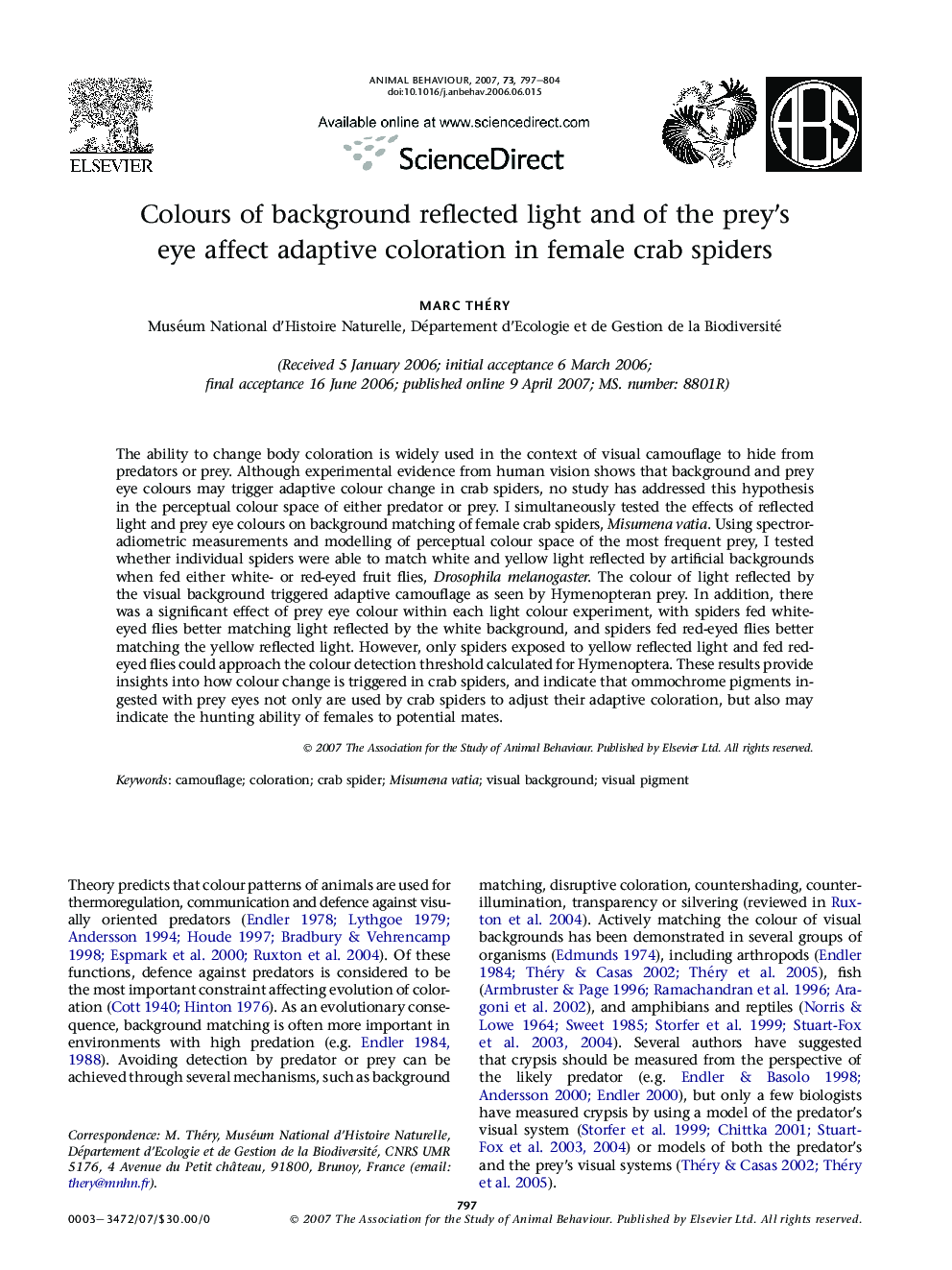| Article ID | Journal | Published Year | Pages | File Type |
|---|---|---|---|---|
| 2418991 | Animal Behaviour | 2007 | 8 Pages |
The ability to change body coloration is widely used in the context of visual camouflage to hide from predators or prey. Although experimental evidence from human vision shows that background and prey eye colours may trigger adaptive colour change in crab spiders, no study has addressed this hypothesis in the perceptual colour space of either predator or prey. I simultaneously tested the effects of reflected light and prey eye colours on background matching of female crab spiders, Misumena vatia. Using spectroradiometric measurements and modelling of perceptual colour space of the most frequent prey, I tested whether individual spiders were able to match white and yellow light reflected by artificial backgrounds when fed either white- or red-eyed fruit flies, Drosophila melanogaster. The colour of light reflected by the visual background triggered adaptive camouflage as seen by Hymenopteran prey. In addition, there was a significant effect of prey eye colour within each light colour experiment, with spiders fed white-eyed flies better matching light reflected by the white background, and spiders fed red-eyed flies better matching the yellow reflected light. However, only spiders exposed to yellow reflected light and fed red-eyed flies could approach the colour detection threshold calculated for Hymenoptera. These results provide insights into how colour change is triggered in crab spiders, and indicate that ommochrome pigments ingested with prey eyes not only are used by crab spiders to adjust their adaptive coloration, but also may indicate the hunting ability of females to potential mates.
